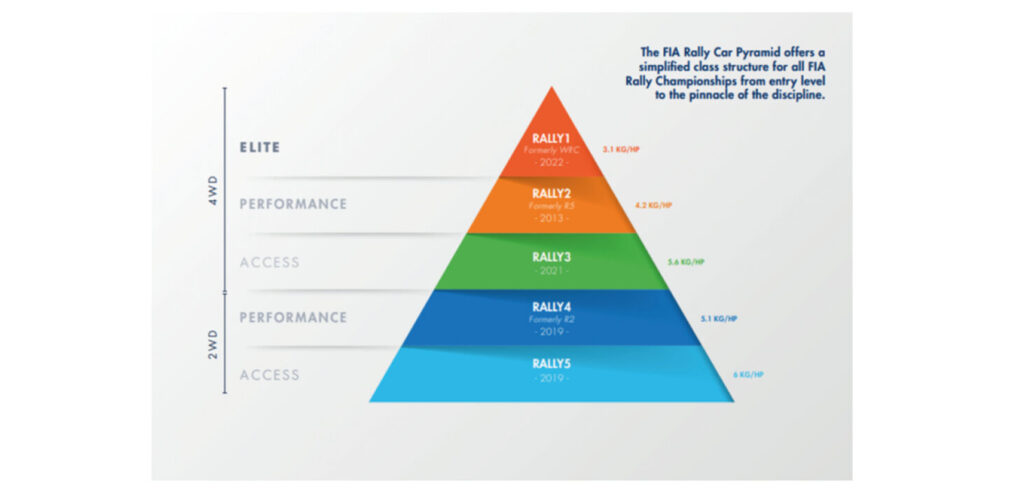An webinar hosted by the FIA Rally Department has been held to encourage National Sporting Authorities (ASNs) to adapt to the new FIA Rally Car Pyramid and subsequently use it as a framework for national regulations.
The FIA states that the aim of the webinar was to offer ASNs an insight into the new organization and to outline next steps, including the hybridization of certain categories and disciplines.
During the webinar, a panel of guest speakers representing manufacturers and ASNs joined FIA Rally director Yves Matton, Regional Rally manager Jérôme Roussel and the WRC Commission president Carlos Barbosa and discussed how the new structure will benefit national competitions in terms of safety, accessibility, driver development and levelling the playing field.
The pyramid is said to offer a simplified class structure that is applicable to various FIA-sanctioned rally competitions, ranging from entry to professional levels. In 2018, work on the revised pyramid started, and with last year’s homologation of the Ford Fiesta Rally3, the pyramid has been completed, with cars now available for every layer.
Made up of five tiers, the pyramid features two bottom sections reserved for front-wheel-drive cars and the top three for four-wheel-drive machinery.
At the bottom, Group Rally5 represents an entry level platform, with only the vehicle’s bodyshell, seat and harness mountings needing to be homologated by the FIA.
Next up, Rally4 contains the highest-performance front-wheel-drive rally cars, featuring a power output of roughly 210hp. Having started in 2008 under the R2 category, this group features an array of makes and models. The Rally3 level then offers an accessible platform for drivers willing to step up into a four-wheel-drive category.
Second to last, Rally2 represents top end performance and competition among cars built for and aimed at customer racing. Currently, there are 10 different models from seven manufacturers eligible for use this group.
At the top of the pyramid sits Rally1, the top tier of the sport with cars competing in the FIA World Rally Championship. Hybrid-powered cars are set to take the place of the current generation of vehicles next year.



